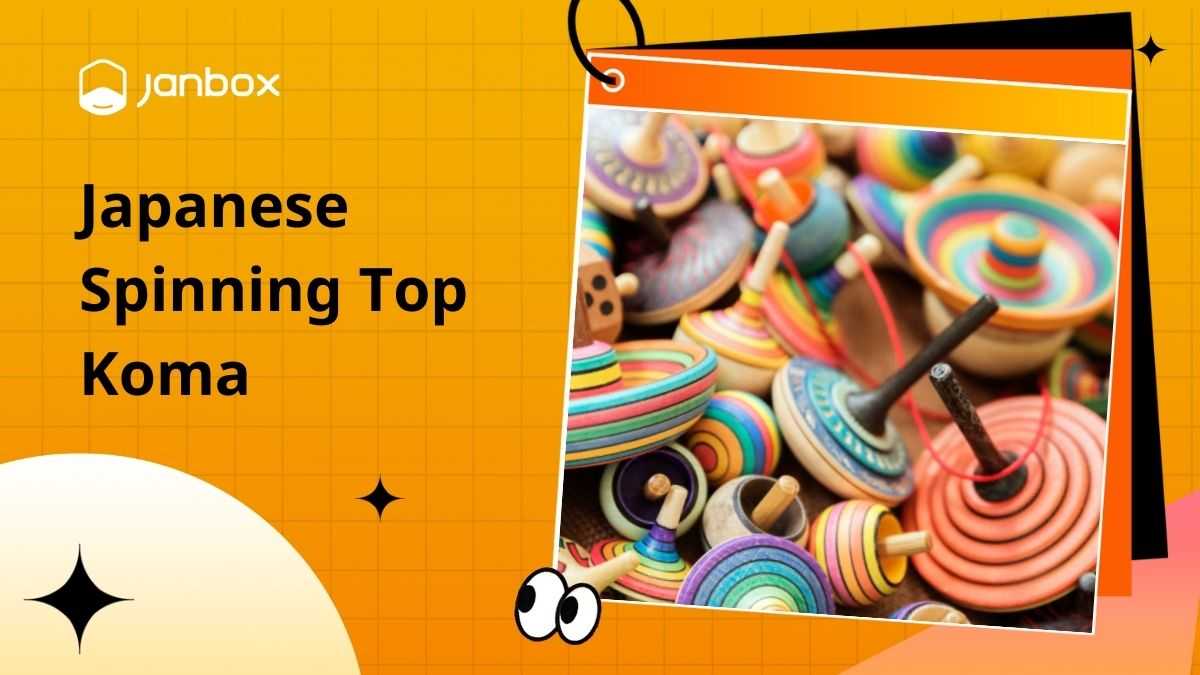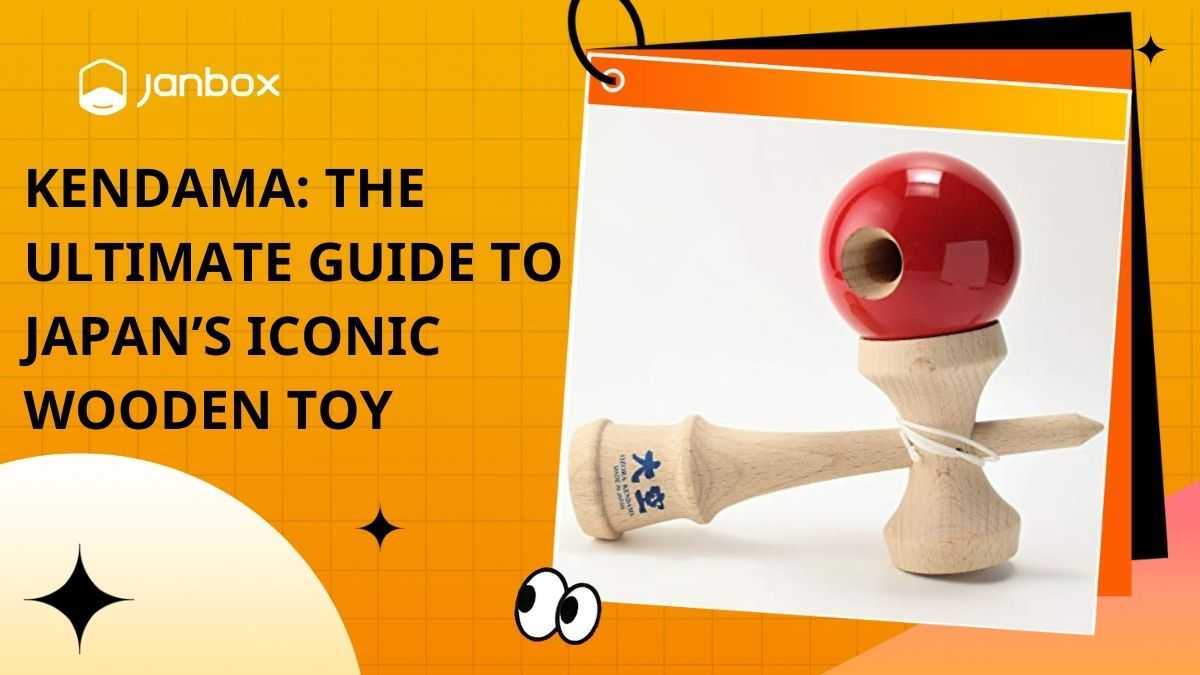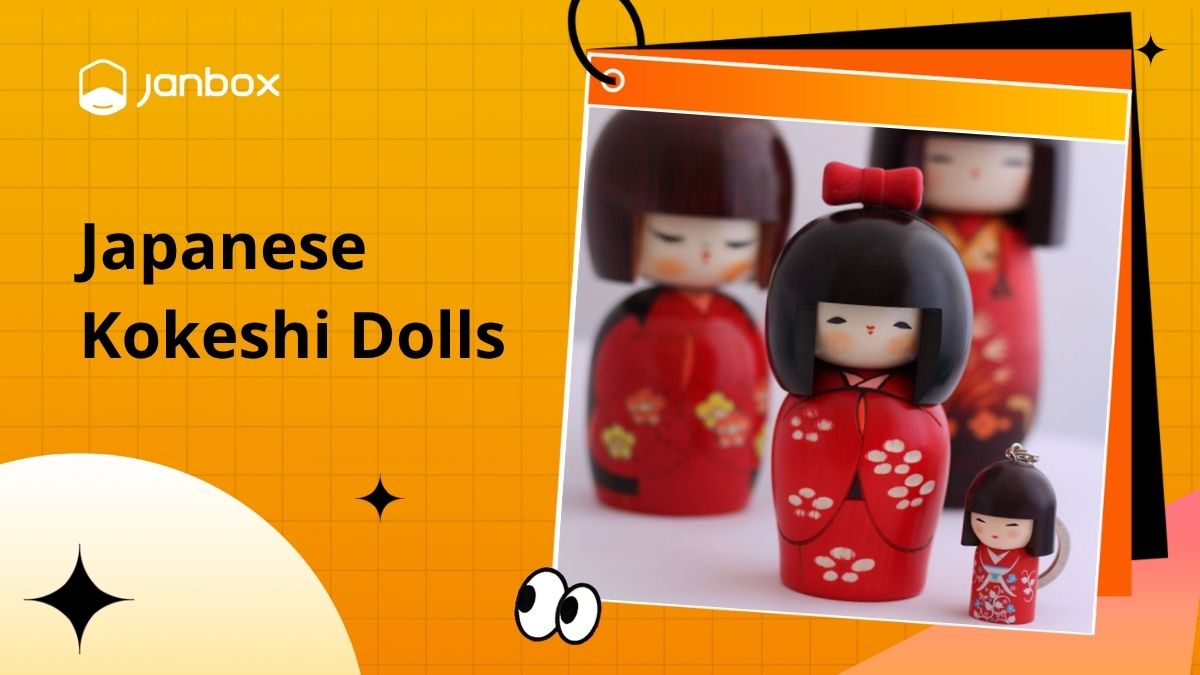Japanese Koma spinning tops (独楽 – koma) are more than just simple toys; they are profound cultural symbols, blending art, science, and enduring tradition. From their humble beginnings to the intricate performances of master artisans, a Spinning Top Koma has captivated people for centuries.
This article will delve into the rich historical origins, diverse types, hidden meanings, and cultural values of Japanese Koma spinning tops, helping you discover the inherent beauty in each mesmerizing spin.
1. What is a spinning top Koma?
In Japanese, “Koma” (独楽) is the general term for a spinning top. The origin of the word is believed to come from “komagashi” (駒返し), meaning “horse returning,” referring to its rotational movement. Another explanation suggests it comes from “komata” (木独楽), meaning wooden top.
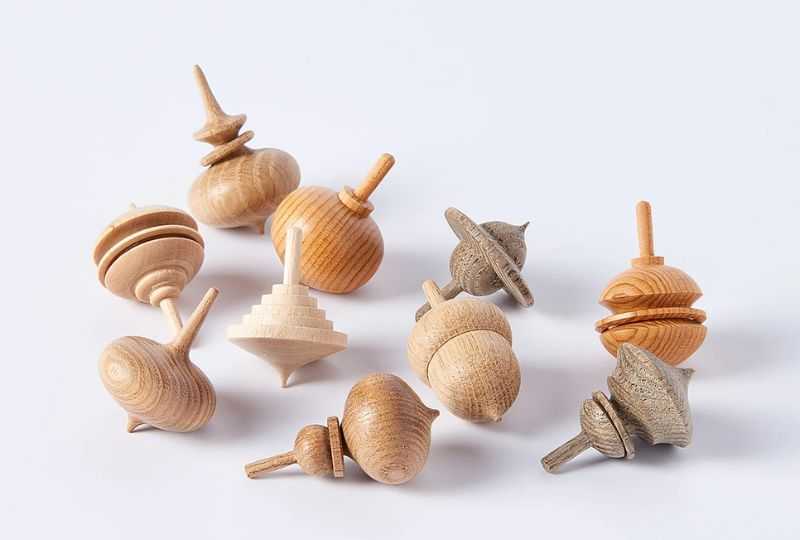
1.1. Structure of Koma
Koma have a simple structure but are meticulously designed to optimize their spinning ability. While there are many variations, the basic components typically include:
- Body (胴 – Dō): This is the main part, often spherical, cylindrical, or mushroom-shaped, made from wood, metal, or sometimes plastic. The Koma’s body is carefully weighted to ensure stability during spinning. Many traditional Koma have bodies hand-painted with vibrant patterns, carrying cultural or symbolic meanings.
- Spindle/Axis (心棒 – Shinbō / 軸 – Jiku): This is a small shaft protruding from the center of the Koma’s body, usually made of metal (steel) or hard wood. This is the point of contact with the surface and where the top spins around. The sharpness and hardness of the spindle determine the friction and spinning duration.
- String (紐 – Himo): A long piece of string, typically cotton or nylon, used to wrap tightly around the Koma’s body to impart the initial spinning force.
Some special types of Koma may have additional components such as:
- Metal rings: To increase inertia and durability.
- Removable parts: Allowing for customized weight or shape for performances.
1.2. How Japanese Koma Spinning Tops Work
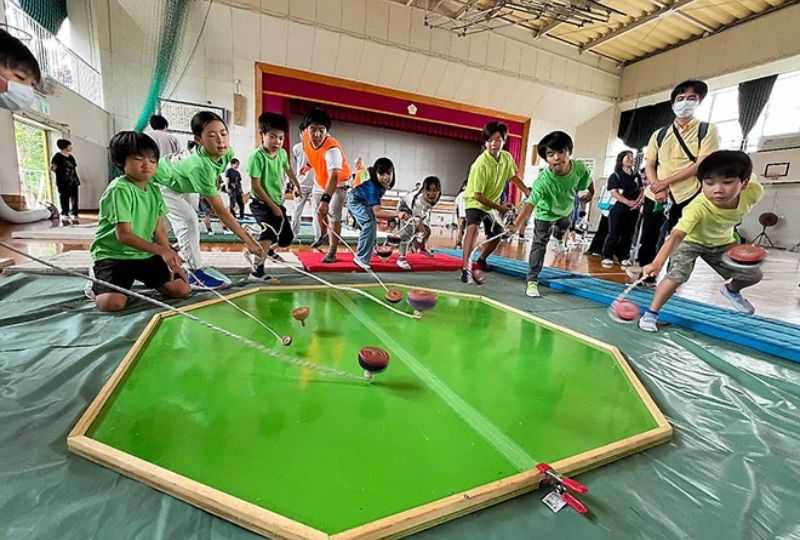
The operating principle of Koma is based on fundamental laws of physics:
Generating Spin:
- The player tightly wraps the string around the Koma’s body, starting from the tip and moving upwards.
- When the Koma is thrown onto a flat surface (or released from the hand) and the string is simultaneously pulled forcefully, this pull creates a large torque, causing the Koma to begin spinning very rapidly around its axis.
Angular Momentum and Gyroscopic Effect:
- Once the Koma starts spinning, it possesses angular momentum. This momentum causes the Koma to tend to maintain its spinning state and keep its axis’s orientation stable in space. This is precisely why the spinning top stands upright and doesn’t immediately fall over.
- The gyroscopic effect is the phenomenon that helps the Koma maintain its balance. When the Koma tilts slightly, gravity acts upon it, but because it is spinning, it generates a perpendicular reactive force, pushing the top back into a state of balance.
Friction:
- Friction between the Koma’s tip and the contact surface, along with air resistance, gradually slows down the spin.
- As the spinning speed decreases, the gyroscopic effect weakens, and the Koma begins to wobble (a phenomenon called precession) until it loses balance completely and falls.
Master Koma artisans can precisely control the throwing force, string winding, and interaction with the Koma (e.g., using their hand or string to keep it from falling) to extend the spinning time or perform complex routines, demonstrating a perfect combination of human skill and physical laws.
2. Historical Origins of Japanese Spinning Top Koma
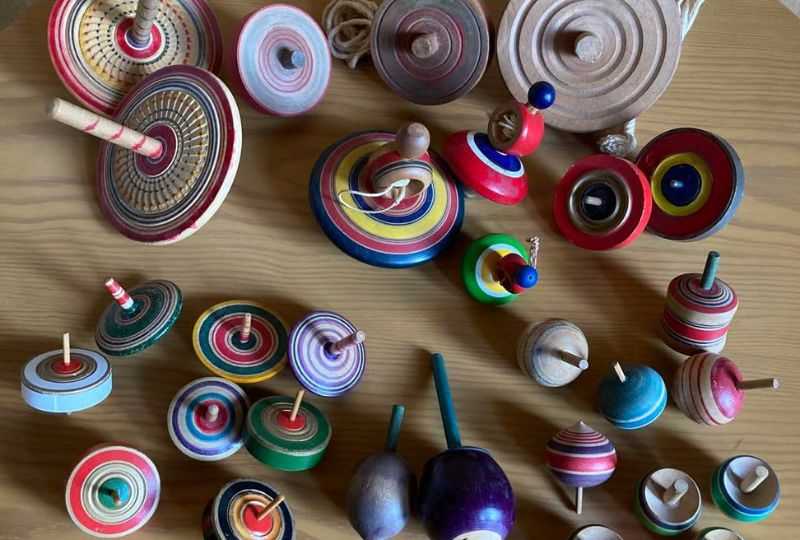
The history of Japanese Spinning Top Koma is a long and fascinating journey, intrinsically linked to the development of culture and entertainment in the Land of the Rising Sun:
- Ancient Beginnings (8th – 12th Centuries): The earliest evidence of spinning tops in Japan can be traced back to the Nara (710-794 AD) and Heian (794-1185 AD) periods. It is believed that spinning tops were introduced to Japan from China or Korea. Initially, they were not only used as toys but also possibly in religious rituals or as auxiliary tools in daily activities.
- Kamakura Period (1185-1333): Spinning tops gained popularity among the samurai class and nobility as a form of indoor entertainment. They began to be made from wood or metal, with simple yet sturdy designs.
- Edo Period (1603-1868) – The Boom and Diversification Phase: This was the golden age of Japanese Spinning Top Koma.
- Widespread Popularity: Koma became a popular toy and form of entertainment across all social strata, from street children to Daimyo (feudal lords).
- Emergence of Professional Artisans: Koma-shi (独楽師), specialized artisans who crafted and performed with spinning tops, began to appear. They developed many different types of Koma, each with its own design, materials, and intended use.
- Development of Regional Styles: Different regions of Japan began to develop their own unique Koma styles, reflecting local craftsmanship techniques and cultural characteristics.
- 20th Century and Decline – Revival:
- With the advent of modern toys and Western influence, the popularity of Japanese Spinning Top Koma significantly declined in the mid-20th century.
- However, thanks to the efforts of traditional artisans and cultural enthusiasts, Koma experienced a revival in the late 20th and early 21st centuries, gaining recognition as an art form and an important part of Japan’s cultural heritage.
3. Meaning and Cultural Value of Japanese Koma Spinning Tops
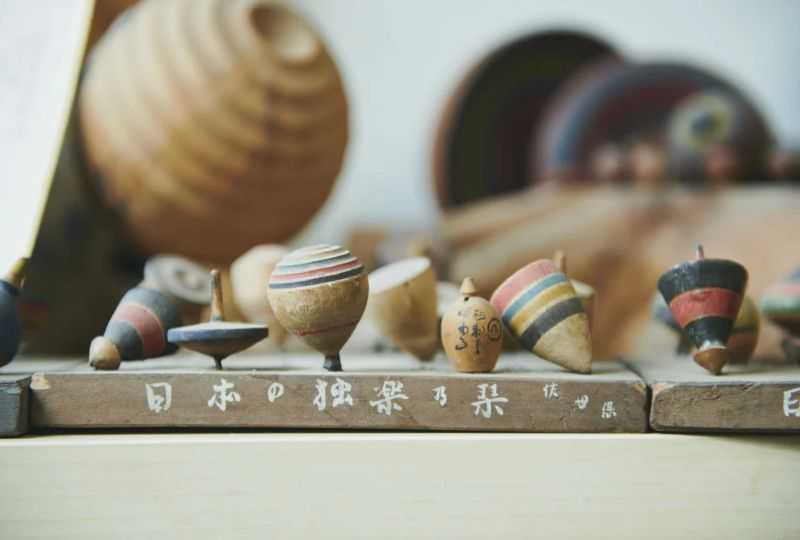
Japanese Spinning Top Koma carry many profound meanings beyond being merely entertaining toys:
- Symbol of Good Fortune and Prosperity: Because Koma spin continuously without stopping, they are often considered symbols of longevity, the continuous flow of wealth, and prosperity. A long-spinning Koma is seen as a sign of good luck and sustained success in business or life.
- Perseverance and Focus: For a Koma to spin for a long time and perform complex tricks, it requires the player’s patience, focus, and skill. This reflects the value of discipline and effort in Japanese culture.
- Artistic Craftsmanship and Technique: Each Japanese Spinning Top Koma is a miniature work of art, showcasing the meticulousness, precision, and talent of the artisan. From wood selection and weight balancing to intricate hand-painted designs, every detail carries high artistic value.
- Generational Connection: Koma is a timeless toy that connects generations from children to adults, helping to pass down traditional skills and cultural values from ancestors.
- Life Philosophy: The balance of a spinning Koma, even on a tiny point, symbolizes stability and harmony in life, even when facing challenges.
>>> Read more: Top 10 Best Japanese Traditional Toys You Should Not Miss
4. Popular Types of Japanese Koma Spinning Tops
The world of Japanese Koma is very diverse, ranging from simple folk tops to highly technical masterpieces:
4.1. Traditional Koma (Dento Koma – 伝統独楽)
These are spinning tops crafted in classical styles, often associated with specific regions and passed down through generations of artisans. They are typically made of wood and have unique characteristics in terms of shape, structure, and hand-painted designs.
Dento Koma often has a sturdy construction, simple yet elegant design, focusing on stable and long spins.
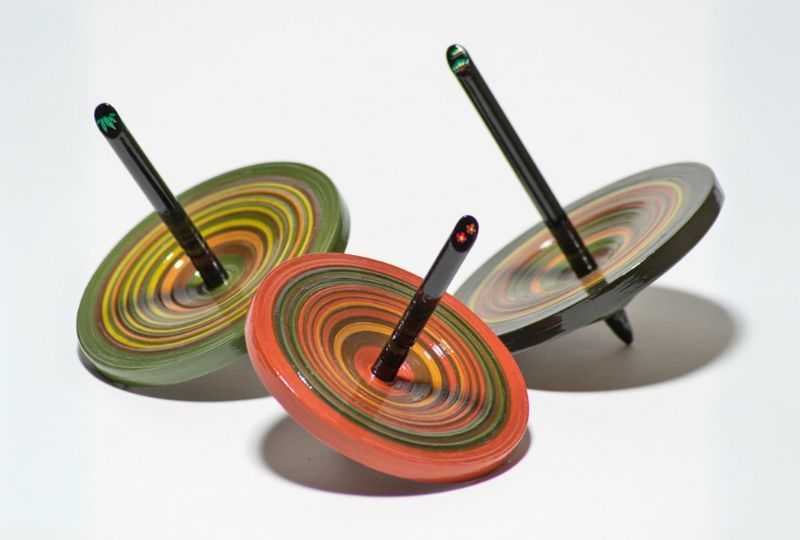
Types of famous styles:
- Edo Koma (江戸独楽): Famous for its painting techniques and perfect balance, often featuring intricate designs and vibrant colors, made from various types of wood.
- Kyo Koma (京独楽): From Kyoto, embodies elegant and refined beauty, often made from lightweight wood and wrapped in silk fabric.
- Sasara Koma (ささら独楽): A special type of Koma with multiple small wooden segments connected by a string. When spun, these segments fan out, creating a unique visual effect.
- Chankoma (チャンド独楽): A simple folk Koma, often found in rural areas.
4.2. Performance Koma / Trick Koma (Kyokugei Koma – 曲芸独楽)
These spinning tops are specially designed to perform complex maneuvers and high-skill tricks. They are not merely spun on a flat surface. They often have weight, shape, and balance points optimized for special performances. They may have added components like strings, handles, or grooves for tricks.
Famous performance techniques:
- Spinning on a tightrope.
- Transferring Koma from hand to hand or between objects (like swords, fans).
- Making the Koma spin and climb a string.
- Spinning multiple Koma simultaneously.
This type of Koma is associated with traditional Japanese street performances (koma-mawashi), where artisans showcase their masterful talents.
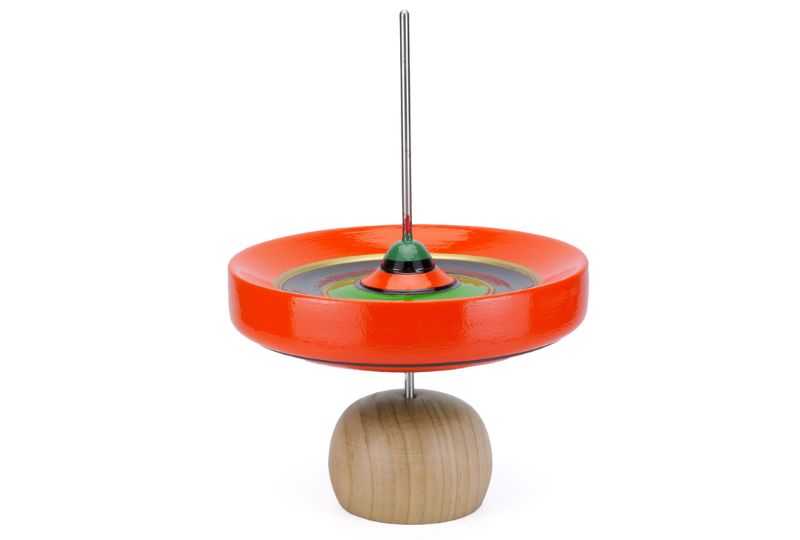
4.3. Modern and Creative Koma (Modern/Contemporary Koma)
In the present age, Koma continues to evolve with the incorporation of new materials and technologies. Besides wood, they are also made from precision metals like stainless steel, brass, or even advanced engineering plastics.
Modern artisans and designers often create Koma with high aesthetic appeal, focusing on extremely long spin times (potentially hours), or becoming collectible art pieces. Some modern Koma combine advanced physics and engineering principles to achieve maximum spinning performance.
5. Guide to Ordering Japanese Koma Spinning Tops on Janbox
Want to own an authentic Japanese Koma spinning top, be it a traditional, performance, or modern type, but don’t know how to buy remotely? Janbox is your one-stop Japanese proxy shopping solution, making it easy to access countless unique Koma options often only available on the domestic Japanese market. With Janbox, buying Japanese Koma spinning tops has never been simpler or more convenient, no matter where you are in the world.
Janbox acts as your reliable bridge to leading Japanese shopping and auction platforms, where you can find every type of Koma from renowned artisans to rare collectible editions.
The process for ordering Japanese Koma spinning tops on Janbox is simple and transparent:
Step 1: Find Your Koma Spinning Top:
- Visit the Janbox website and use the search bar. You can enter “独楽” (Koma), “日本の独楽” (Japanese Koma), or more specific keywords like “江戸独楽” (Edo Koma) if you’re looking for a traditional type.
- Janbox helps you search across various Japanese shopping platforms like Rakuten, Amazon Japan, JDirectItems Shopping, and especially JDirectItems Auction – where unique, handcrafted, or rare vintage Koma often appear.
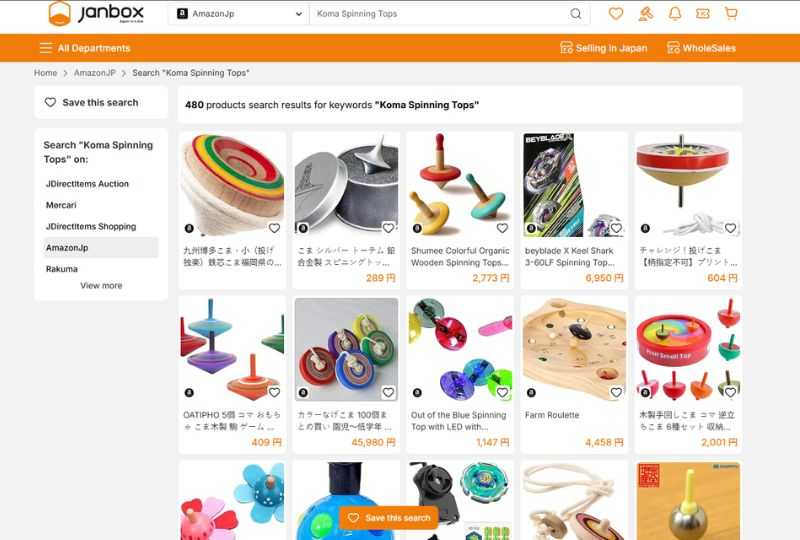
Step 2: Add to Janbox Cart / Place Bid:
- Once you find your desired Japanese Koma spinning top, simply paste the product URL into Janbox’s search bar. The system will automatically display product details and estimated fees.
- For auction items on Yahoo! Auctions Japan, you can set the maximum bid you’re willing to pay. The Janbox system will automatically bid on your behalf up to that maximum amount.
Step 3: Place an order
Select your desired product and add it to your cart. Review your order details and proceed to checkout.
Step 4: Make the first payment & track your order
Choose a suitable payment method. After making the first payment which includes the product cost, service fee and domestic shipping fee (if any), you can check your order in the Order History section.
Step 5: Track shipment
Janbox will update the order status from Japan until it arrives in Vietnam.
Step 6: Make the second payment
Pay the international shipping fee and any additional charges (if applicable).
Step 7: Receive your package
Your package will be delivered to the address you registered earlier.
With Janbox, you can easily acquire unique Japanese Koma spinning tops and receive comprehensive support with language and logistics, ensuring your international shopping experience is seamless and enjoyable.
>>> Read more: How To Buy In JDirectItems Fleamarket with Janbox Proxy Service
6. Conclusion
Spinning top Koma are far more than simple toys; they are captivating symbols of Japanese artistry, rich tradition, and remarkable ingenuity. From their ancient origins to their mesmerizing modern interpretations, these koma spinning tops embody a unique blend of engaging physics, exquisite craftsmanship, and deep cultural significance.
Understanding the various types, the intricate process of their creation, and the diverse ways to spin top koma not only enriches the appreciation of these fascinating objects but also connects you to a vibrant cultural heritage. Whether you’re drawn to their historical roots, their mesmerizing balance, or the challenge of mastering an intricate trick, the world of Koma offers a delightful and rewarding journey. With reliable services like Janbox, bringing an authentic Japanese Koma top into your collection, no matter where you are in the world, has never been easier.
Website: https://us.janbox.com
Email: [email protected]

